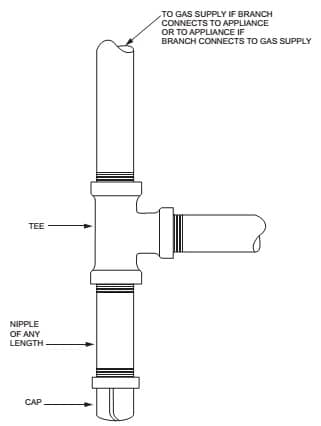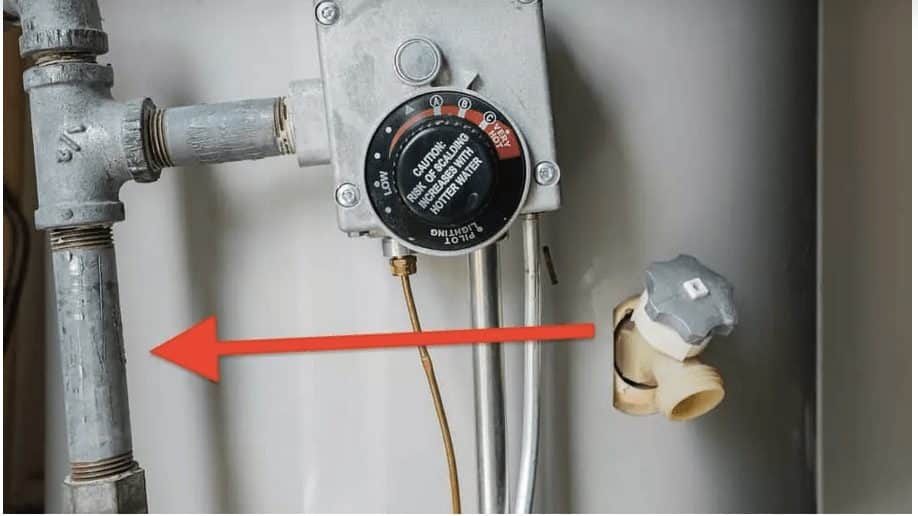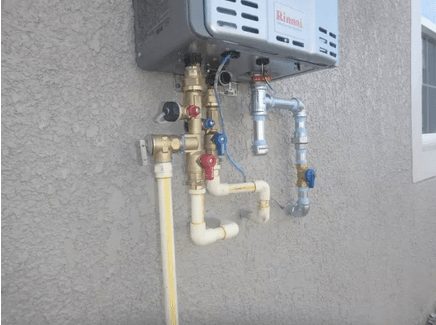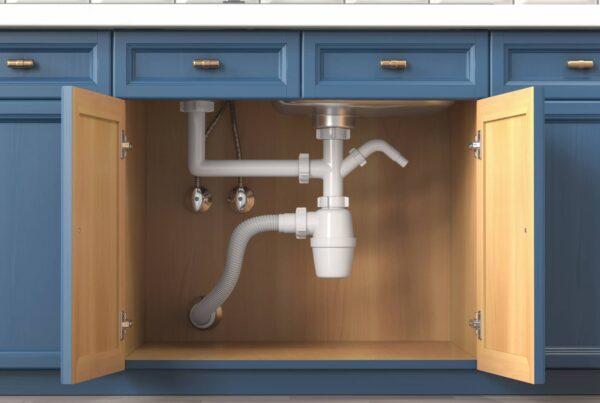
If you have a gas furnace or gas water heater, then you should have a short, vertical gas pipe on the front. It may look like it isn’t useful or goes anywhere, however it is very useful! This is a gas line sediment trap and it traps the debris in the line so it doesn’t go into the appliance.
Let’s take a look at why this is important, appliances that do and don’t require this, installing one later, how sediment gets in, examples of properly and improperly installed traps, what to do if there is not one on an appliance, home inspections and gas line sediment traps, and maintenance.
Why This is Important
Gas appliances are very expensive and you want them to last as long as possible. The sediment trap keeps the debris out of the appliance and extends the life of it, if it is maintained and installed properly. Some people call this “drip leg”, “drip tee”, or “dirt leg.” However, you probably won’t see those names in the building codes.
Appliances That Require and Don’t Require a Gas Line Sediment Trap
Here in Florida, the Building Code states:
Appliances required to have a gas line sediment trap are pool gas heaters, fireplaces, and other appliances that operate automatically.
Appliances that don’t require this: An appliance that has a flame when it is in operation, also known as illuminating devices. These are also ranges, clothes dryers, decorative vented appliances for installation in vented fireplaces, gas fireplaces, and outdoor grills.
They don’t require the gas sediment trap because the operator of those appliances can tell when they stop working. Check with the Building Code in your state for the rules and exceptions.
Can a Gas Line Sediment Trap Be Installed
If the gas appliance did not come with a sediment trap, it can be installed. A professional can do this for you for about $100, or you can get a kit at the local hardware store for about $10.
Another way is to buy a gas line at a hardware store and install it for even cheaper. Installing it vertically is important so that it allows the sediment to go downstream.
There are also rules about where and how the sediment traps can be installed:
- Close to the inlet of the equipment
- Installed ahead of all pounds-to-inches pressure regulators
- Made of a tee fitting with a capped nipple, a minimum of 3 inches in length, in the bottom opening of the run of the tee
- Provide a 90-degree change of direction of gas flow, to help prevent sediment from flowing over the trap
- The cap shall be at an elevation lower than the tee fitting
If you have a Bradford White water heater, check out this video for installing a gas sediment trap. This is now required.
While you are there, make sure the water heater reset button works as well and you follow the maintenance for water heaters.
How Sediment Gets Into the Gas Line
Sometimes metal shavings from cutting of pipes or from gas line installs can get into the gas line. Also, dirt from crews who are installing gas lines in the area. If the sediment gets into the appliance, it can clog and cause it to malfunction.
Example of Correctly Installed Gas Sediment Trap
A gas sediment trap consists of a tee, nipple, and cap. It should go straight down before the pipe that enters into the appliance.

Florida Building Code states:
G2419.4 (408.4) Sediment trap.
Where a sediment trap is not incorporated as part of the appliance, a sediment trap shall be installed downstream of the appliance shutoff valve as close to the inlet of the appliance as practical. The sediment trap shall be either a tee fitting having a capped nipple of any length installed vertically in the bottom-most opening of the tee or other device approved as an effective sediment trap. Illuminating appliances, ranges, clothes dryers and outdoor grills need not be so equipped.

Source: Waypoint Inspection
Here is one below that is installed incorrectly. This is because the gas line does not go straight down into the drip leg or sediment trap. Debris in the gas line can easily travel into the appliance.

Source: Waypoint Inspection
What If There Isn’t a Gas Sediment Trap on My Appliance?
It is not a big deal if your appliance is missing one. Don’t fret! However, when you replace the appliance, have the plumber install one for you if there isn’t one. If you have questions about other types of plumbing, you can read about them here.
What If It Comes Up in a Home Inspection
Some home inspectors will note it if there is no gas sediment trap while conducting a home inspection. However, it is not one of those things that must be fixed for closing on a home. It’s really just recommended.
Maintenance of Appliances
Don’t forget that if you are looking at your appliances to see if they have a gas sediment trap, check to make sure they are working correctly. Maintenance is important for all appliances to work.
Swimming Pool Heater
While you are checking the pool heater, make sure that the pool pump is not leaking and that the pool area is safe. If there is a leak in the pool, make sure you get that fixed.
Fireplace
When looking over the fireplace, check out the chimney to make sure everything looks good such as the ashes are clean, the damper is open, and no animals are making a nest.
When To Call a Professional
Call a professional when you need help looking for a gas sediment trap on an appliance, not sure if you need one, or if it isn’t working.
Conclusion
Gas sediment traps are required on only a few appliances, according to building codes in your state. If you have questions, we can inspect your appliances during our home inspections in Central Florida: Clermont, Orlando, and The Villages. Questions about your gas sediment traps or in need of our services? Comment below!



